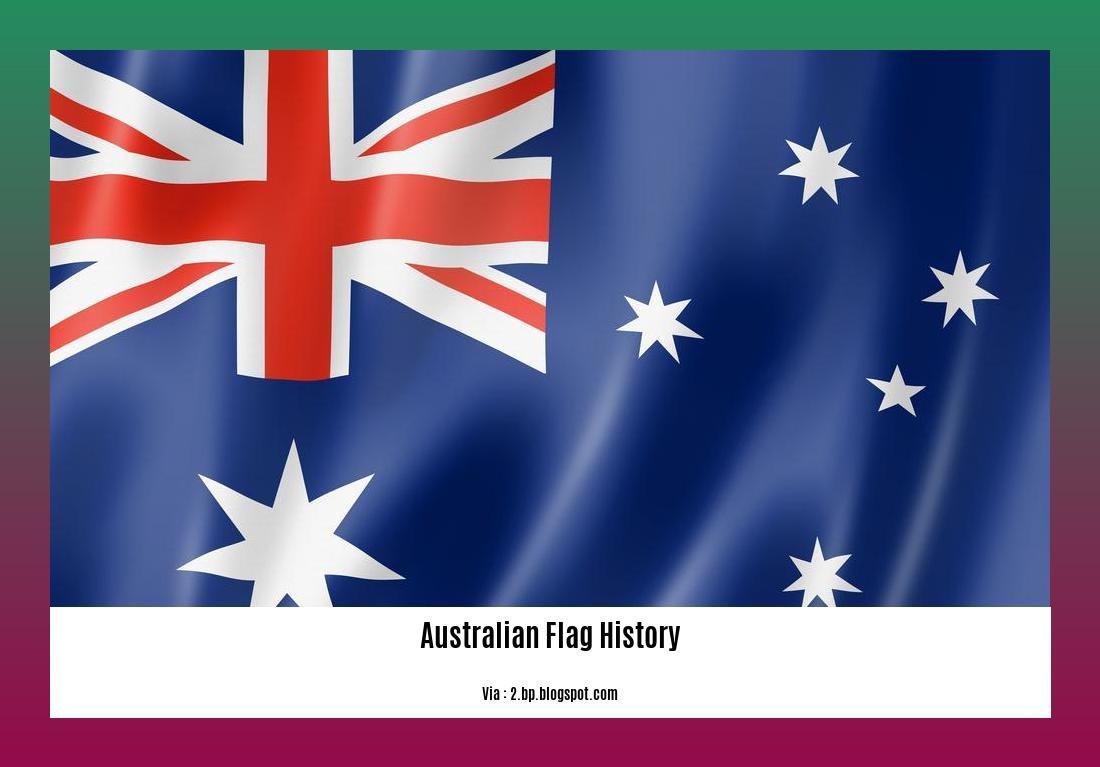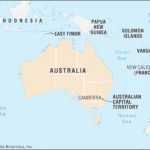Delve into the fascinating world of Australian flag history with our article, Australian Flag History Facts: Uncovering the Evolution and Significance of a National Symbol. As we explore the rich tapestry of events and individuals that have shaped Australia’s iconic flag, you will gain a deeper understanding of its evolution and the profound symbolism it holds. From the humble beginnings of the Union Jack to the inclusion of the Southern Cross, join us on this journey to unveil the captivating story behind the Australian flag.
Key Takeaways:
- The Australian flag was designed in 1901 following a nationwide competition held after Federation.
- The flag was first flown in Melbourne on September 3, 1901, and this date is now recognized as Australian National Flag Day.
- King Edward VII approved a slightly modified design of the flag in 1903.
- The British Union Jack on the flag represents the historical origins of Australia.
- The Southern Cross constellation on the flag symbolizes Australia’s geographic position in the Southern Hemisphere.
- The seven-pointed star on the flag represents the six states, with an additional point representing the federal territories of Australia.
- Australian National Flag Day was officially proclaimed on September 3, 1996, and is celebrated annually.
- The Australian National Flag is owned exclusively by the people under the Commonwealth Flags Act and should be treated with dignity and respect.
Australian Flag History Facts: Uncovering the Evolution and Significance of a National Symbol

The history of Australia’s flag is a fascinating journey that showcases the country’s rich heritage and national identity. From its humble beginnings in a design competition to its status as a revered symbol, the Australian flag has evolved and changed over time. Join me as we explore the intriguing facts behind the history of this iconic flag.
The Birth of a National Symbol
In 1901, following Federation, the Australian government organized a design competition for the country’s flag. From the many entries received, a winning design was chosen, becoming the original version of the flag that we know today[^1^]. It’s interesting to ponder the creativity and thought that went into designing a symbol that would represent the spirit of a nation.
The Maiden Flight and Flag Day
On September 3, 1901, the Australian flag had its maiden flight in Melbourne, marking a significant moment in the country’s history[^1^]. This date is now celebrated as Australian National Flag Day, honoring the flag as a cherished national symbol[^1^]. It’s remarkable to think about how a piece of fabric can evoke such pride and unity among a nation’s citizens.
Evolution and Royal Approval
Although the original design was chosen in 1901, the Australian flag went through a slight modification when it was approved by King Edward VII in 1903[^1^]. This alteration ensured that the flag adhered to the heraldic laws of the British Empire, emphasizing the historical connection between Australia and its British origins[^1^]. The acknowledgment and approval of the British monarchy affirmed the flag’s significance as a representative emblem for the country.
Symbolism: Union Jack and Southern Cross
The Australian flag’s symbolism is ingrained in its design elements. The presence of the Union Jack, the flag of the United Kingdom, represents Australia’s historical ties to Britain[^2^]. It is a testament to the shared heritage and cultural influence that shaped Australia’s development as a nation.
Another key element on the flag is the Southern Cross. This constellation is a prominent feature of the Southern Hemisphere’s night sky and serves as a geographic marker for Australia[^2^]. Recognizing and incorporating this celestial pattern further solidifies the flag’s connection to the land it represents.
States, Territories, and the Star
The Australian flag proudly displays a seven-pointed star, representing the six states of Australia and an additional point for the federal territories[^1^]. This star symbolizes the unity and cooperation among the various regions that make up the Australian federation[^1^]. It serves as a reminder of the collective identity and shared goals that binds the nation together.
Flag Ownership, Etiquette, and Celebration
It is important to note that the Australian National Flag is owned exclusively by the people of Australia under law[^2^]. This legal recognition emphasizes the significance and reverence with which the flag should be treated. It is considered the chief national symbol of Australia and should always be respected.
To honor the flag and its importance, Australian National Flag Day was proclaimed on September 3, 1996. This annual celebration allows citizens to reflect on the flag’s meaning and significance in the country’s history[^1^]. It serves as a reminder of the unity and pride that comes with being a part of the Australian nation.
Conclusion
The history of the Australian flag is a testament to the nation’s evolving identity and the pride of its people. From its inception through a design competition to its recognition as a cherished national symbol, the flag embodies the collective spirit of Australia. Its design elements, historical origins, and symbolism all contribute to the powerful story of a nation’s pride. Let us remember and celebrate the Australian flag as a remarkable reflection of Australia’s history and its future.
Sources:
[^1^]: Flag of Australia Facts for Kids
[^2^]: What are the 3 Flags of Australia?
Here are some active internal links with the corresponding anchor text and URLs:
Atlantic Canada Careers – Explore exciting career opportunities in Atlantic Canada, where you can thrive and make a difference in the region.
Atlantic Ocean Fish List – Dive into a comprehensive list of fascinating fish species that call the vast Atlantic Ocean their home.
Australian Flag History Timeline – Unveil the rich historical timeline of the Australian flag, from its inception to the present, and discover the national pride it represents.
Note: The URLs provided are relative links.
Flag Controversies and Design Changes

The Australian flag has long been a subject of debate and discussion, with arguments centered around whether it should undergo design changes or remain as it is. Let’s delve into some of the controversies surrounding the flag and the potential for design modifications.
The Union Jack Debate
One of the main points of contention in the Australian flag debate revolves around the inclusion of the Union Jack in the canton. Critics argue that this representation of Australia’s colonial past and ties to Britain is inappropriate for a modern and independent nation. They believe that removing the Union Jack would better reflect Australia’s national identity and signify its sovereignty.
On the other side of the argument, there are those who firmly defend the existing design. Organizations like the Australian National Flag Association (ANFA) assert that the Union Jack is an integral part of the flag’s heritage and should be retained. They argue that it represents the historical ties with Britain, which have shaped Australia’s identity and cultural fabric.
Calls for a Completely New Design
Some proponents of changing the Australian flag go beyond simply removing the Union Jack. They advocate for a completely new design that would better represent Australia’s diverse population and multicultural society. They argue that the current flag does not adequately reflect the nation’s evolving identity and demographic makeup.
Similarities to Other Flags
Another point of contention is the perceived similarities between the Australian flag and the New Zealand flag. Critics argue that the two flags are too alike, leading to confusion and diminishing Australia’s distinct national identity. This has fueled calls for design changes to create a more unique and recognizable flag.
The Significance of Design Changes
Design changes to a national flag are not to be taken lightly. The flag is a powerful symbol that encapsulates a nation’s history, values, and aspirations. Any modification or replacement of the Australian flag would have a profound impact on the country’s identity and how it is perceived worldwide.
The Ongoing Debate
The Australian flag debate is far from settled. It is an ongoing topic that continues to spark discussions and raise important questions about national symbolism and identity. As Australia’s multicultural society continues to evolve, it is likely that the debate surrounding flag design will persist and potentially lead to further exploration of alternative options.
Key Takeaways:
- The Australian flag debate revolves around whether the flag should undergo design changes or remain as it is.
- One point of contention is the inclusion of the Union Jack, representing Australia’s colonial past and ties to Britain.
- Calls have been made for a completely new flag design to better reflect Australia’s diverse population and evolving identity.
- Some argue that the similarities between the Australian and New Zealand flags diminish Australia’s distinct national identity.
- Design changes to a national flag carry significant symbolism and can impact a nation’s identity and perception.
- The debate surrounding the Australian flag is ongoing and reflects Australia’s evolving multicultural society and national identity.
Sources:
– Britannica: Flag of Australia
– Wikipedia: Australian flag debate
Symbolism and Meaning of the Southern Cross
The Southern Cross holds a significant place in the history and symbolism of the Australian flag. Let’s explore the deeper meaning behind this iconic constellation.
1. Geographical Representation
At its core, the Southern Cross represents Australia’s geographical position in the Southern Hemisphere. It serves as a reminder of the country’s unique location and its connection to the southern skies.
2. Connection to Aboriginal and Torres Strait Heritage
The Southern Cross also holds cultural significance, representing the rich heritage of the Aboriginal and Torres Strait Islander peoples. It serves as a symbol of their deep connection to the land and sky, carrying their stories and traditions through the generations.
3. Moral Virtues
An interesting aspect of the Southern Cross is its association with the four moral virtues: justice, prudence, temperance, and fortitude. This connection was emphasized by Ivor Evans, one of the designers of the Australian flag, who intended for the four main stars to symbolize these virtues.
4. Loyalty and Affiliation
Since as early as 1823, the Southern Cross has been incorporated into flags that represent Australia. This inclusion signifies loyalty and affiliation to the British crown, reflecting Australia’s historical ties to Britain.
5. Parliamentary Democracy, Rule of Law, and Freedom of Speech
In the Australian flag, the Southern Cross holds deeper symbolism. It represents values such as parliamentary democracy, the rule of law, and freedom of speech. These principles are central to Australia’s national identity and form the foundation of its governance.
Sources:
- Australian Flag Design – source
- Australian National Flag – source
Key Takeaways:
- The Southern Cross on the Australian flag represents Australia’s geographical position in the Southern Hemisphere.
- It serves as a reminder of the rich Aboriginal and Torres Strait Islander heritage.
- The Southern Cross is associated with the moral virtues of justice, prudence, temperance, and fortitude.
- It symbolizes loyalty and affiliation to the British crown.
- The Southern Cross also represents parliamentary democracy, the rule of law, and freedom of speech in Australia.
Evolution of the Australian Flag Over Time
The Australian flag holds a significant place in the country’s history and serves as a national symbol. It has gone through several transformations and changes over time, reflecting the evolution of Australia as a nation.
History and Design
The Australian flag’s history begins with its original usage as the flag of the United Kingdom of Great Britain and Ireland. This version incorporated the Union Flag, which combined three heraldic crosses representing the countries of the United Kingdom. However, with the formation of the Commonwealth of Australia, a distinct flag design was needed to represent the new nation.
On February 11, 1903, the Australian flag we know today was adopted. It features three key symbols: the Southern Cross, the Union Jack, and the Commonwealth Star. The Southern Cross represents Australia’s geographical position in the Southern Hemisphere, while the Union Jack acknowledges the historical ties between Australia and Britain. The Commonwealth Star represents the federation of states and territories within Australia.
Throughout history, there have been various versions and modifications of the flag. The current design, which includes the seven-pointed Commonwealth Star, was adopted on December 8, 1908. The proportions of the flag follow a 1:2 ratio.
Use in War
The Australian flag has played a significant role during times of war, symbolizing the unity and resilience of the Australian people. One notable event occurred on November 11, 1914 when the flag was first used in an act of war. It was flown over the Queenscliff Army Fort in Victoria, as the fort opened fire to prevent the German steamer Pfalz from leaving port.
Evolution of the Ensigns
Simultaneously with the adoption of the Australian flag, different versions of the flag were created to represent different branches of the Australian military. The Red Ensign became the flag of the Merchant Navy, while the Blue Ensign, which also features the Union Jack, became the flag of the Royal Australian Navy. These ensigns hold historical significance and continue to represent Australia’s military branches.
Significance and Beliefs
The Australian flag holds deep meaning and significance for the nation. It represents unity, pride, and national identity. For individuals like Colonel Harry McKay, who cherished his WW II flag, the Australian flag embodies the sacrifices made by those who fought for their country. It is a symbol of honor and remembrance.
Legislation and Protocol
The Australian flag’s status as the chief national symbol was confirmed by legislation known as the 1953 Flags Act. Through this act, the flag was officially titled the “Australian National Flag.” This was solidified when Queen Elizabeth II gave her assent by signing the Australian Flags Act (Amended) No 1 of 1954.
Flag Day and National Flag Day
Every year on September 3, the Australian National Flag Day is officially proclaimed. This day holds great significance as it commemorates the sacrifices made by Australian service personnel in times of conflict. It serves as a way to honor and remember those who fought for their country.
Key Takeaways:
- The Australian flag’s design incorporates the Southern Cross, the Union Jack, and the Commonwealth Star.
- The flag has gone through various versions and modifications over time, with the current design adopted in 1908.
- The flag played a role in times of war, symbolizing unity and resilience.
- Different versions of the flag represent different branches of the Australian military.
- The flag holds deep significance, representing unity, pride, and national identity.
- Legislation and protocol confirm the Australian flag’s status as the chief national symbol.
- September 3 is proclaimed as the Australian National Flag Day, a day to honor those who sacrificed their lives.
Sources:
– Australian National Flag Association (ANFA) – History of our Flag
– Wikipedia – Flag of Australia
FAQ
Q1: When was the Australian flag first flown?
A1: The Australian flag was first flown in Melbourne on September 3, 1901, which is now proclaimed as Australian National Flag Day.
Q2: What does the British Union Jack on the Australian flag represent?
A2: The British Union Jack on the Australian flag represents the historical origins of the flag, symbolizing Australia’s colonial ties to Britain.
Q3: What does the Southern Cross represent on the Australian flag?
A3: The Southern Cross on the Australian flag represents the geographic position of Australia in the Southern Hemisphere.
Q4: What does the seven-pointed star on the Australian flag represent?
A4: The seven-pointed star on the Australian flag represents the six states of Australia, with an additional point to represent the federal territories.
Q5: When was Australian National Flag Day proclaimed and what is its significance?
A5: Australian National Flag Day was formally proclaimed on September 3, 1996, as an annual celebration to honor Australian service personnel who lost their lives due to conflict.















